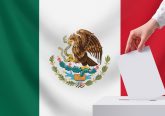The mass media forms a key channel through which instances of human rights violations are made public. However, the media can only publish a small proportion of stories, as media practitioners are required to sift through wider information, deciding what to cover. A media ethnography conducted in Mexico in 2006, before and after the presidential elections, can illuminate what journalists are trying to do in their human rights coverage and how their outlooks and contexts condition the incidents that are covered.
Parts of the Mexican media played a significant role in the country’s democratic transition since the 1968 Tlateloco Massacre, resulting in a general shift among journalists away from a cozy and financially lucrative relationship with the government. This led to the growth of new ‘market-oriented’, as opposed to ‘state-oriented’, newspapers. Both usually have a human rights beat investigating citizens’ complaints about infractions committed by state institutions. This often involves collaboration with the independent human rights commissions established in the 1990s.
Within this context, this case of Mexico suggests the mixture of outlooks and contexts affecting processes of extracting human rights news from wider information can be put into four categories: newsworthiness, journalistic aims, economic aims and political aims. A human rights story is more likely to be published by a newspaper the more it corresponds to these criteria.
The first factor, newsworthiness of a story, appears to be tricky to define; many of the editors interviewed claim it was a ‘sentiment’ that was ‘uncertain’, ‘improvised’ or ‘arbitrary’. Still, their explanations suggest some common criteria for newsworthiness. Firstly, published stories generally concerned incidents where human rights were transgressed rather than respected. One editor of El Universal explained ‘human rights are there to be taken care of … Therefore it is news when they are violated.’ Other aspects of newsworthiness included novelty, exclusivity, impact, representativeness, and timeliness. In particular, the potential political impact of a violation was considered greater, and therefore more ‘newsworthy’, if it involved multiple victims or was particularly severe, as in the case of a 13-year-old girl who was denied a legal abortion after she was raped. Editors also sought to publish stories that were representative of wider problems, such as inequality. The idea, as an editor of El Universal put forward, was ‘that when we talk of inequality or poverty, people have a point of reference’.
Journalists’ aims, or their perceptions about the role of their media institutions in society, tend to amount to principles of democratic governance, or, according to the journalists at La Jornada ‘giving voice to those who don’t have it’ and ‘criticizing power’. This played out in two ways. Firstly, by bearing witness, journalists could hold the state accountable, often by publishing the recommendations of the human rights commissions. One journalist emphasized this as crucial to generating public moral pressure: ‘If the people don’t find out because we don’t publish… the authority just says, ‘Whatever.’ Secondly, by being witness to human rights transgressions, journalists could prevent further atrocities. For example, referring to human rights infractions during police clashes in the town of Atenco, one journalist claimed, ‘If there had not been live television coverage or live photographers, I think there would have been more deaths.’ Human rights reporting was also seen to be consciousness-raising by spreading knowledge of rights.
The economic aims of a newspaper depended on whether it was ‘state-oriented’ or ‘market-oriented’. ‘Market-orientated’ newspaper editors searched for human rights stories that would appeal to potential audiences. One newspaper, looking to augment the number of female and young readers, regularly published violations concerning these particular demographics, at the expense of other vulnerable populations, such as the elderly or indigenous. For newspapers conducting the graphic form of tabloid journalism, known as nota roja, the emphasis was on particularly violent or brutal human rights violations, excluding non-violent infractions such as the denial of the right to education. Generating credibility for a news establishment was another economic motive. For example, the editor of Tiempo said the paper covered the story of a man beaten to death by the police, in order to show that the paper was ‘trustworthy media’ bringing the state to account. For ‘state-oriented’ newspapers the inclusion of a human rights story was determined by which politician or agency was the target of the accusation. One reporter in Chiapas province said that as long as the governor was not implicated, a human rights story could float. For these papers then, economic interests overrode journalistic aims.
The final category of factors affecting media selection of human rights stories, political aims, appeared difficult to differentiate from purely economic motivations, and therefore politics appeared to play a far smaller role. Still, the partisan mentality of leftist papers such as La Jornada made them critical of the ruling centre-right National Action Party, though journalists at the paper claimed that their stance was ideological rather than party-based. Personal politics could occasionally also affect information transmission. In Chiapas one state-orientated newspaper owner sought to exchange good coverage of one of the candidates for state governor in exchange for a coveted job.
From a detailed look at the variety of factors informing the selection of human rights stories by the media, it appears possible to begin to construct a framework for understanding their inclusion. The combination of the four ‘categories’ of factors: newsworthiness, journalistic aims, political aims and economic aims, can be the basis for examining why some human rights stories were published and others ignored. Ultimately the implications of this model are as important for the stories included as those that are excluded, and we must remember the fact that a significant proportion of human rights information never reaches a public because it is not witnessed, it is not considered newsworthy, or it contraindicates the media’s editorial line aims.
(This piece has been condensed by Partha Moman, CGHR, from a book chapter recently published by CGHR research associate Dr. Ella McPherson. The full text of Dr. McPherson’s work can be read here.)









No Comment